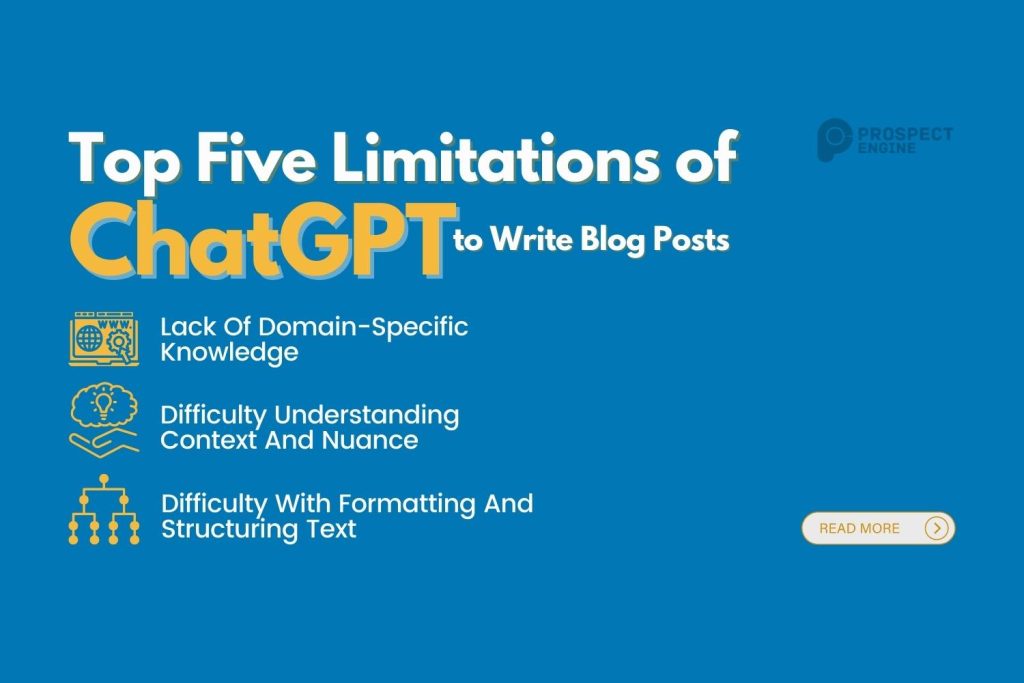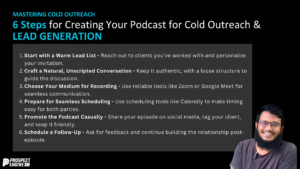Attention all bloggers and content creators! Are you searching for a tool to help you craft top-notch blog posts quickly and effectively? Look no further than ChatGPT! Developed by OpenAI, ChatGPT is a state-of-the-art language model that can assist you in your writing endeavors. However, it’s important to be aware of ChatGPT’s limitations.
ChatGPT Limitations: While this powerful language model can generate text based on a given prompt, it may encounter difficulties when it comes to writing blog posts. These limitations include a lack of domain-specific knowledge, difficulty understanding context and nuance, formatting and structuring text, and a lack of convergent thinking. Additionally, ChatGPT may not be able to provide feedback on your writing.
As a blogger or content creator, you want to create high-quality, engaging content that will keep your readers coming back for more. You want a tool that can help you write quickly and efficiently without sacrificing quality.
ChatGPT is a valuable tool for bloggers and content creators. By understanding its limitations and using it in conjunction with other tools and techniques, you can use ChatGPT to write high-quality blog posts quickly and efficiently.
In this blog post, we will take a closer look at each of these limitations and explore ways to work around them. So, if you’re ready to take your blogging to the next level, keep reading!
What is Chat GPT?
Chat GPT (Generative Pre-training Transformer) is a large-scale language generation model developed by OpenAI. It is based on the transformer architecture introduced in the 2017 paper “Attention Is All You Need” by Google researchers. The model is trained on a massive dataset of internet text to generate human-like text in response to a given prompt.
Chat GPT is designed to generate text in a wide range of formats and styles, including conversational text, news articles, stories, poems, and more. It can be used for various natural language processing tasks, such as language translation, text summarization, question answering, and content generation.
It’s a powerful tool for generating text, but it does have some limitations, such as a lack of domain-specific knowledge, difficulty understanding context and nuance, limited ability to generate original content, difficulty with formatting and structuring text, and limited ability to incorporate personal voice and style.
Top Five CHAT Gpt Limitations to Write Blog Posts
As a blogger or content writer, if you want to use Chat GPT to write content or blog posts for your blog, you must know its limitations.
ChatGPT Limitations: Lack Of Domain-Specific Knowledge
One of the main limitations of ChatGPT when it comes to writing blog posts is its lack of domain-specific knowledge. Because ChatGPT is a general-purpose language model, it does not have the same level of expertise and knowledge in a specific field or industry as a human expert would.
This can be a problem when writing blog posts on a specific topic that requires a deep understanding of a particular subject matter. For example, if you’re writing a blog post about a complex medical condition, ChatGPT may not have the same level of understanding and knowledge as a medical professional.
ChatGPT Limitations: Difficulty Understanding Context And Nuance
Another limitation of ChatGPT in writing blog posts is difficulty understanding context and nuance. ChatGPT is a machine-learning model that may struggle to understand the subtleties and complexities of human language and communication.
For example, ChatGPT may have trouble understanding sarcasm, irony, or humor in the text, or it may misinterpret the tone or intent of a statement. This can lead to the generation of text that is not appropriate or accurate for the given context.
Additionally, ChatGPT may have difficulty understanding the nuances of different writing styles and formats. For example, it may have trouble writing in a conversational or informal tone, or it may struggle to write in a specific genre, such as poetry or fiction.
ChatGPT Limitations: Difficulty With Formatting And Structuring Text
ChatGPT primarily focuses on generating text, and it may struggle to properly format and structure text for a specific purpose or medium.
For example, ChatGPT may have trouble generating text that is properly formatted for a blog post, such as using headings, subheadings, bullet points, and other formatting elements. Additionally, ChatGPT may struggle to generate properly structured text for a specific type of content, such as a news article, a research paper, or a product review.
This limitation can negatively impact the readability and user experience of the final product, making it harder for readers to understand and follow the text. Moreover, the lack of proper formatting and structure can make the text appear unprofessional and less credible.
ChatGPT Limitations: Lack of Feedback
Lack of feedback is another limitation ChatGPT limitation when it comes to writing blog posts. ChatGPT is a machine learning model that generates text based on a given command, but it doesn’t have the ability to receive feedback from users and improve its output.
This lack of feedback can be a problem when writing blog posts requiring high accuracy and relevance. For example, ChatGPT may generate text that is not fully aligned with the user’s expectations or requirements, or it may miss important information or points.
Additionally, the lack of feedback can make it difficult for ChatGPT to adapt to the user’s writing style, tone, and preferences. This can lead to the generation of text that is not in line with the user’s personal voice and style, which can be a problem when writing blog posts that require a specific writing style or tone.
ChatGPT Limitations: Lack of Convergent Thinking
Convergent thinking refers to the ability to focus on a specific problem and find a single, correct solution. ChatGPT, on the other hand, is a language model that generates text based on a given prompt, it generates multiple options but does not have the ability to converge on one solution.
This lack of convergent thinking can be a problem when writing blog posts that require a high degree of accuracy, relevance, and coherence. For example, ChatGPT may generate text that is not fully aligned with the user’s expectations or requirements, or it may miss important information or points. Additionally, ChatGPT may generate text that is repetitive, redundant, or lacks coherence, which can make it difficult for readers to understand and follow the text.
Moreover, the lack of convergent thinking can make it difficult for ChatGPT to generate concise, clear, and concise text. This can lead to the generation of overly verbose, repetitive text or irrelevant information.
How To Overcome The Chat Gpt Limitations To Write Blog Posts?
To overcome the limitations of ChatGPT when it comes to writing blog posts, several strategies can be employed:
Provide Chatgpt With Clear And Specific Prompts And Instructions
To ensure that ChatGPT generates text that is aligned with the user’s expectations and requirements, it is important to provide clear and specific prompts and instructions. This can include providing examples of the type of text you want to be generated and specific guidelines for tone, style, and format.
Fact-Checking And Verifying The Generated Text
To ensure the accuracy and quality of the generated text, it is important to fact-check and verify any information generated by ChatGPT. This can include using additional resources and tools to verify the information and consulting with domain experts to ensure the accuracy of the text.
Manually Editing The Generated Text
It is important to edit the text manually to add originality, creativity, context, nuance, formatting, and structure to the generated text. This can include adding personal voice and style, editing grammar, punctuation, and formatting. Make sure that the final product is properly formatted and structured for its intended purpose or medium.
Using Pre-Trained Models That Are Fine-Tuned On A Specific Dataset
To improve the model’s performance and understanding of a specific domain, fine-tuning pre-trained models on a specific dataset can be helpful. This can help the model to learn the formatting, structuring, and context of a specific type of content.
Provide Chatgpt With A Diverse Set Of Examples And Prompts
To generate more original and creative text, providing ChatGPT with diverse examples and prompts is important. This can help the model to learn a wide range of writing styles, formats, and structures.
Leverage Human Intelligence
To ensure the coherence, quality, and relevance of the generated text, it is important to have a human expert review and edit the text. This can help to ensure that the text is accurate, coherent, and relevant.
In Conclusion
ChatGPT is a powerful tool for generating text. But it does have some limitations when it comes to writing blog posts. The main limitations include a lack of domain-specific knowledge, difficulty understanding context and nuance, difficulty with formatting and structuring text, lack of feedback, and lack of convergent thinking.
To overcome these ChatGPT limitations, it is important to provide ChatGPT with clear and specific prompts and instructions, fact-check and verify the generated text, manually edit the text, use pre-trained models fine-tuned on specific datasets, and provide a diverse set of examples and prompts.
Additionally, using human intelligence by reviewing and editing the text generated by ChatGPT can also help to ensure accuracy, coherence, and relevance in the final product.
It is important to remember that ChatGPT is a tool; like any other tool, it has limitations. However, by understanding these limitations and using them in conjunction with other tools and techniques, bloggers and content creators can use ChatGPT to generate high-quality text quickly and efficiently.
Also, read about: How To Get More Organic Traffic | The SEO Approach





